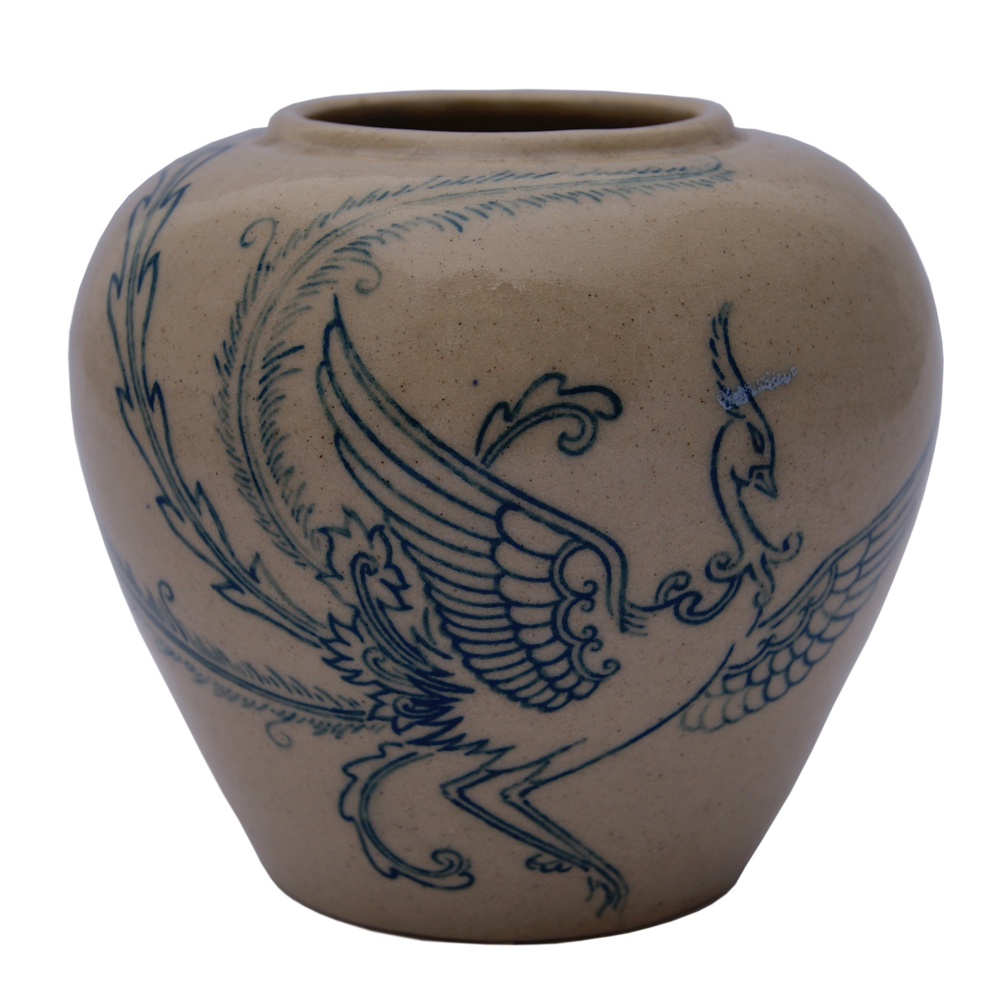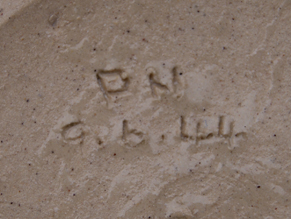 The only reason you should buy any antique or collectable is because you like it. My problem is that I find objects that I like all too frequently, be they online, at a fair or in a shop. It’s almost like a disease, but a pleasant one I guess! Before last week’s Antiques Roadshow at Polesden Lacey in Surrey, I popped into Dorking to do all the antiques shops and centres along West Street. In the Talbot House Antiques Centre, this charming studio pottery ginger jar called out to me. Priced at £30, I simply had to have it.
The only reason you should buy any antique or collectable is because you like it. My problem is that I find objects that I like all too frequently, be they online, at a fair or in a shop. It’s almost like a disease, but a pleasant one I guess! Before last week’s Antiques Roadshow at Polesden Lacey in Surrey, I popped into Dorking to do all the antiques shops and centres along West Street. In the Talbot House Antiques Centre, this charming studio pottery ginger jar called out to me. Priced at £30, I simply had to have it.
And, briefly, here’s why.
- Shown life-size above, it’s small, but very well potted in stoneware by hand. The exterior is smooth, but the gentle ribs resulting from drawing the pot upwards on the wheel can be felt on the inside. The ginger jar is an ancient Chinese form, and this is a balanced example with good proportions. The walls and base are of an even thickness, and even the base and top rims are perfectly formed.
- It’s handpainted with a fantastical bird, and the detailing is wonderful – right down to the tiniest curls on the tail feathers. There’s a sense of life and movement, and the design reminds me of a book illustration. Not only could this potter pot very well, he or she could also draw and paint very well. My friend and Antiques Roadshow colleague Steven Moore tells me that the bird is a copy of a phoenix typically found on Ming period Chinese porcelain.
 The only marks are an inscribed ‘DN 9.6.44’ on the base. That’s interesting for a number of reasons. I expected to see a potters seal (or chop) mark on the base, due to the quality of the potting and painting. The rudimentary way that the mark is inscribed implies that the maker didn’t have a seal, so was perhaps a talented amateur rather than a professional potter.
The only marks are an inscribed ‘DN 9.6.44’ on the base. That’s interesting for a number of reasons. I expected to see a potters seal (or chop) mark on the base, due to the quality of the potting and painting. The rudimentary way that the mark is inscribed implies that the maker didn’t have a seal, so was perhaps a talented amateur rather than a professional potter.
- The numbers are also interesting. Presuming that they represent a date, it would indicate that this piece was made on 9th June 1944. Yes, that’s towards the end of World War Two, and three days after the decisive Normandy Landings began. Would it be too much to read into it that the phoenix is meant to represent a hopeful rebirth for the world from the ashes of war? Or is it just a revival of a traditional Chinese pattern on a Chinese form by an art college student or amateur potter? Call me an old romantic, but I think I prefer the former.
On the bad side, it’s a shame that the potter accidentally dabbed some light blue glaze on his carefully painted bird’s head before glazing it all over. But I really don’t mind – it’s a ‘birthmark of creation’ as master glassmaker Tim Harris puts it. As I held this unique piece, all these stories and possibilities passed through my mind, ending with me being transported back to a potter’s studio during the war. But in which country? Were the bombs and bullets raining down as he potted and painted?
For me, the journey an object takes you on as it reveals its own unique story to you is one of the greatest joys of collecting.

